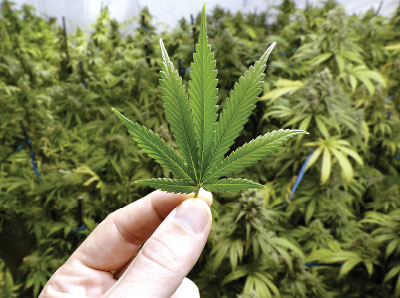Daily and High-Potency Use of Cannabis Linked to Psychosis
Abstract
A multicenter study finds that risk increases threefold with daily use of cannabis and nearly fivefold when the cannabis has THC concentrations greater than 10%.
A study in Lancet Psychiatry reports that the risk of psychosis associated with cannabis is tied to daily use and the use of high-potency cannabis, namely cannabis with concentrations of delta-9-tetrahydrocannabinol (THC) greater than 10%. The study also paints a picture of how cannabis use influences rates of psychosis at a population level.

“We know that for alcohol or tobacco, the greater the consumption, the greater the harm; therefore, it is not surprising to see the same for cannabis—that more THC in the cannabis consumed has more effect on psychosis,” said lead author Marta Di Forti, M.D., Ph.D., M.R.C., clinician scientist fellow in the Social, Genetic, and Developmental Psychiatry Centre at the Institute of Psychiatry, Psychology, and Neuroscience in London. “Although it was to be expected, it needed to be shown; and we could [show] it across several sites, making the findings more generalizable than [previous research].”
Di Forti and her colleagues analyzed data from 901 patients aged 18 to 64 years with first-episode psychosis across 11 sites in Europe and Brazil and 1,237 control patients from the same sites. The control patients represented the population at risk in terms of sociodemographic characteristics. The researchers found that 29.5% of the patients with first-episode psychosis had used cannabis every day, compared with 6.8% of controls. After adjusting for factors such as socioeconomic status and recreational use of other drugs, they found that people who used cannabis every day were three times more likely to have a diagnosis of first-episode psychosis than those who had never used cannabis and nearly five times more likely if they used high-potency cannabis daily.
The findings varied by region and were particularly profound in Amsterdam and London, where high-potency cannabis is widely available compared with cities in Italy, France, and Spain. In Amsterdam, daily cannabis use was associated with 43.8% of first-episode psychosis cases, rising to 50.3% of cases for high-potency use. The corresponding rates in London were 21.0% for daily use and 30.3% for high-potency use. This led the authors to posit that if high-potency cannabis were no longer available in these cities, the number of psychosis cases in Amsterdam could drop from 37.9 to 18.8 per 100,000 people per year, and in London from 45.7 to 31.9 per 100,000 people per year.
“The authors’ premise for the analysis is that these areas have varying incidences of psychosis, which are not well explained. Cannabis may be a missing factor,” said Smita Das, M.D., Ph.D., M.P.H., a researcher at Stanford University School of Medicine and a member of APA’s Council on Addiction Psychiatry. “This study shows that daily use, which can be related to access, and high-potency forms have psychiatric implications. On a public-health level, increasing awareness and education will be important.”
Di Forti agreed, noting that much is still unknown about cannabis.
“Cannabis, now also accepted as medicinal cannabis, is considered a panacea and free of side effects when not even water is as safe as that,” Di Forti said. “Given the correlation between the prevalence of high-potency use and daily use and a greater number of new cases of psychosis across Europe, if we do not invest in informing the public on the effects of heavy cannabis use on mental health, we could see an increase over time in the number of young adults presenting with psychotic disorders.”
Das said that on an individual level, psychiatrists can ask their patients about cannabis use in addition to asking about alcohol and tobacco use, particularly as legalized cannabis use expands. “The most important thing we can do is ask and see where patients are in their desire to continue using, cut down, or quit and if they have questions for us as their psychiatrists,” she said.
This study was funded by the Medical Research Council, the European Community’s Seventh Framework Program, São Paulo Research Foundation, the National Institute for Health Research Biomedical Research Centre (NIHR BRC) at South London and Maudsley National Health Service Foundation Trust and King’s College London, the NIHR BRC at University College London, and the Wellcome Trust. ■
“The Contribution of Cannabis Use to the Variation in the Incidence of Psychotic Disorder Across Europe (EU-GEI): A Multicentre Case-Control Study” can be accessed here.



